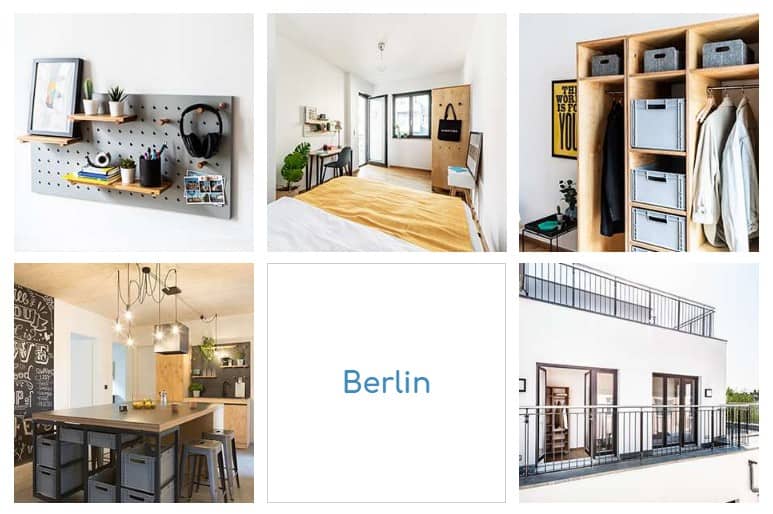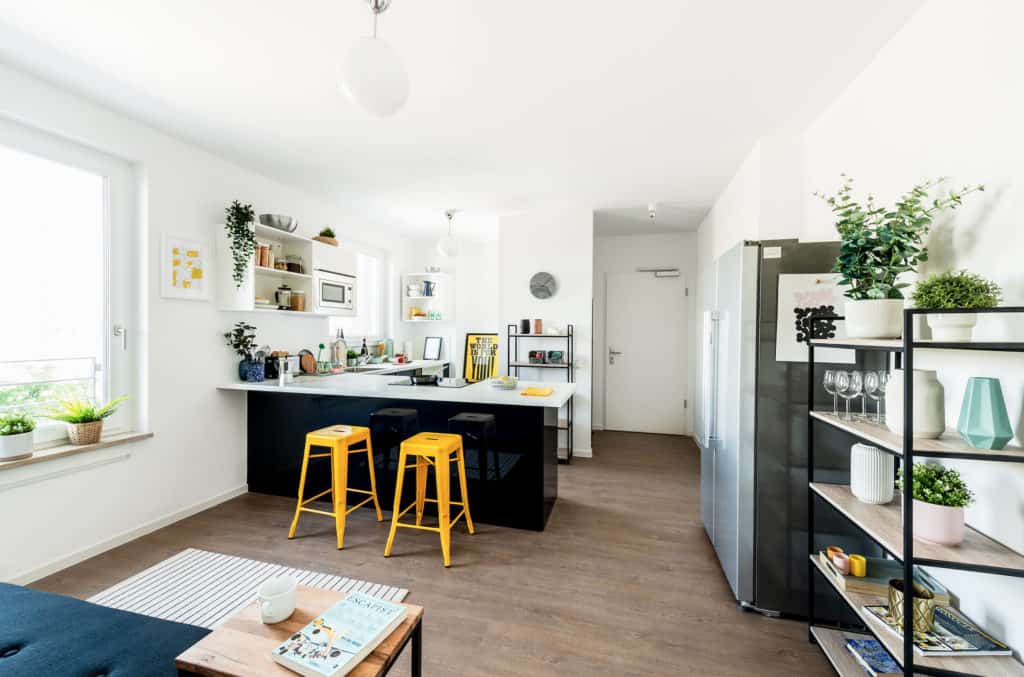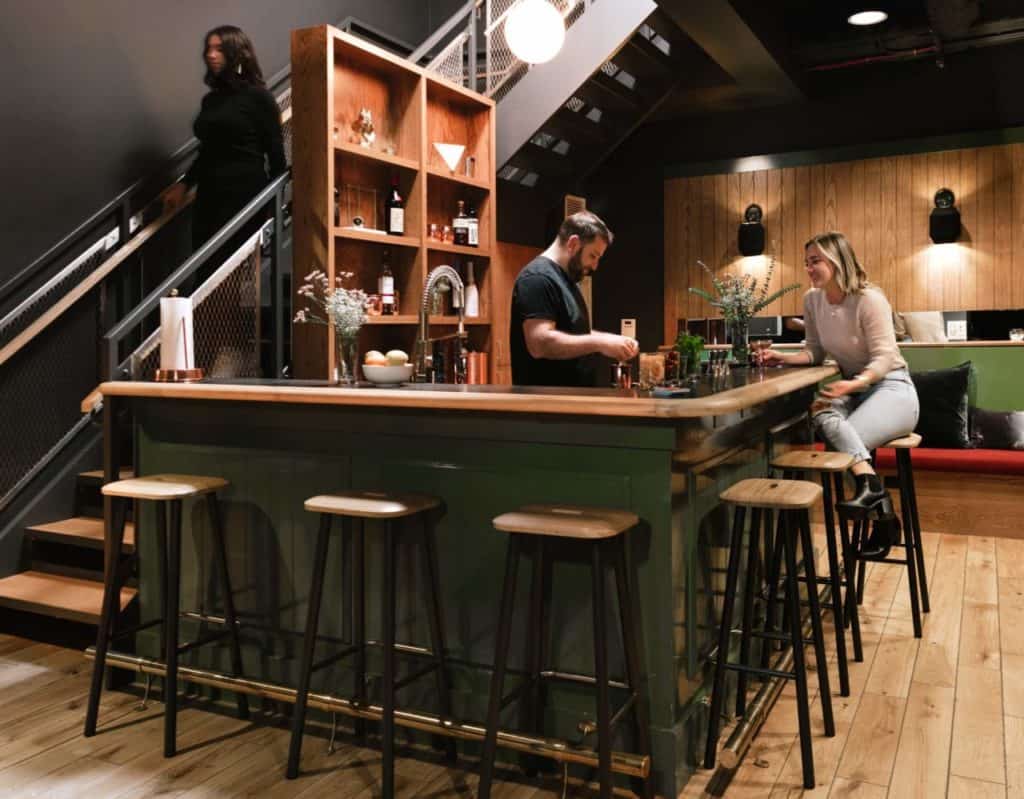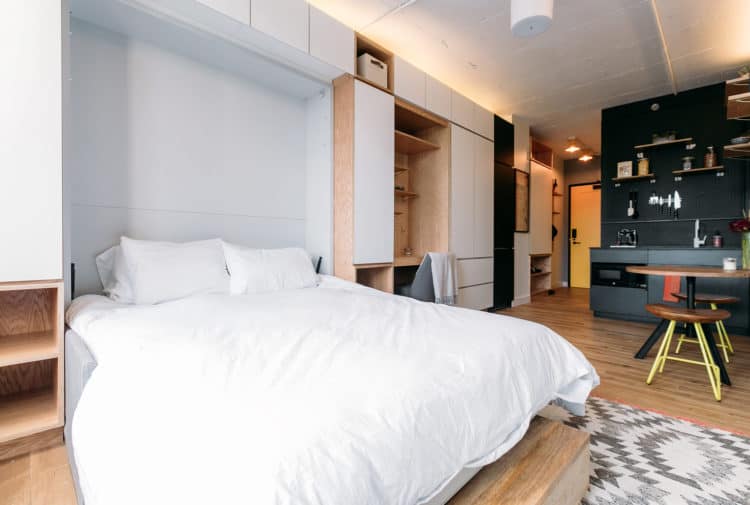The defining characteristic is all coliving spaces offer at least a shared kitchen and living room in the same manner as in a flatshare, but with usually larger and better furnished spaces as coliving spaces focus more on the shared facilities than the individual space.
Coliving spaces are fully furnished, specially-designed living spaces create an inspiring environment for people to interact and share experiences. Most of the inhabitants in the coliving communities say the biggest value of joining a coliving space is the access to the community. This type of space is ideal for people relocating for a new job, studying for a degree, working remotely, starting a new company, or getting to know a new city for a short period of time.
The target customers for this kind of living space are young professionals, entrepreneurs, artists, travelers, remote workers, students who want to benefit from a flexible and furnished lifestyle. Lots of millenials prefer this type of accommodation also for the fact that there is no need for a deposit or 2 months notice to the landlord.
The perks of joining a coliving community
Even though most of the coliving communities offer similar packages like cleaning, breakfast, coworking spaces, the difference is made by the community, the location and the experiences they offer.
For example, some coliving building spaces offer more for other venues, another co-working space, a library that feels like a coworking space, a restaurant and a bar. Others include even studios for arts, like painting or woodworking or surf lessons. Make sure you check and compare what you get for the monthly rent in different locations with different coliving brands. The monthly cost to have access to all these is somewhere between $1,200 to $3,300/month (in the UK for example) and most of the coliving spaces have no joining fee and you can leave with one month’s notice. Other coliving places in Asia or Central America can be cheaper around $1,000/month.
Some coliving concepts like Outsite.co have locations all over the world that charge a membership fee of $99/year and around $1,100 for a month of accommodation and coworking. Of course, the price differs from location to location, for example, the location in Bali is less expensive than the one in California.
Outsite includes in the monthly price comfy and spacious bedrooms, a coworking area, linen and toiletries, weekly cleaning and a community manager to help in need.


Quarters, another co-living developer originally from Berlin, now has properties in New York and Chicago and has just announced a $1bn expansion to build many more across the US and Europe. It has common spaces in 40+ cities and 14+ countries. They promise spacious bedrooms with modern design, rooftops and well-curated communities.
The Quarters organises weekly events, from community dinners to acoustic jam sessions, yoga training on the rooftop and morning runs.


There is also a cool app where you can see what is happening in the community and join events, order the cleaning and even unlock your room.
WeWork, the co-working giant, has also launched a coliving concept called WeLive with furnished apartments available for flexible rental in New York and Washington DC.


A more exotic concept can be found in Morocco at SunDesk, a coworking and coliving community located in the sunny surf village of Taghazout, Morocco. They can host up to 16 coworking stations, supply a skype room, 200 MBPS fibre internet and surfing lessons if you are up for it.
Prices start from €27.5 per night for accomodation (private single room) and office space if you get it for a month.


Millennial lifestyle and financial struggles are the main drivers of this coliving movement
Coliving appeals particularly to millennials due to rising property prices. Residents of coliving spaces typically range between the ages of 19 and 40 years. They are typically employees of startups, entrepreneurs, or students. A survey conducted in various cities in India found that approximately 72% of millennials were willing to consider a coliving space. Part of the appeal to millennials is due also to a relative reluctance to marry and/or start a family due to cost.
High student loan costs are also a contributing factor to why millennials are attracted to this kind of accommodation. From 2005 to 2015, there was a 39% increase in millennials living with housemates. The rise in coliving and similar housing was also impacted by the financial crisis of 2007–2008. Coliving is particularly popular in cities and urban spaces where housing is costly and limited, providing a more affordable and amenity-based alternative to individual apartments. Guests from the same or similar industry tend to be matched together.
“If done right, co-living and community-led housing can be a useful tool for urban and community planning.”It can help in terms of creating cohesive and integrated communities, with richer social capital and higher levels of trust”
Atif Shafique, researcher at Royal Society of the Arts
Main benefits of joining a coliving community
- Almost no commitments on the lease length (no long commitments on rent)
- In house and include facilities like gym and in-house cinema
- Cleaning included in the price
- Monthly rolling subscription
- Access to a network of like-minded people and activities for self-development
- Build long-lasting relationships
- No headaches with the bills, all included
Drawbacks
- Small rooms(in some coliving buildings)
- Expensive
- Cleaning may not be at a high standard, especially in the kitchens
- A community can become dull due to lack of flow of tenants
- Not suitable for families or couples (rooms are usually small)
So is coliving really the future of living and working?
Societies all over the world are still researching how coliving can solve the housing problem in major cities as well as how it can help to tackle millenials and gen-Z’s loneliness issues.
Atif Shafique, a senior researcher for the public services and communities team at the Royal Society of the Arts, a social reform charity, co-authored a report, Co-living and the common good, in 2018. He said, “If done right, co-living and community-led housing can be a useful tool for urban and community planning.”It can help in terms of creating cohesive and integrated communities, with richer social capital and higher levels of trust” he added.
And the keyword here is “done right”. Coliving can work if the community is small enough so members interact easily and more importantly if the living quarters offer generous spaces and are nicely integrated with nature.
However, even if from one angle the coliving idea looks like a revolutionary proposition, it can just as easily be seen from another angle as a cash cow for property developers. They can be accused of trying to squeeze money from a generation locked in a continuous struggle to find a place they can call home. Many coliving spaces have tiny bedrooms and come at ridiculous prices, especially in cities like New York or London. Some ex-tenants have complained about the space in the bedrooms or studios and noticed that some of the communities just seemed like big expensive dorms.
The question that comes to mind then does it even make sense to rent a room in a coliving community when one can just rent one in a shared flat.
Others noticed issues on a personal development level. For example, managing your bills and cleaning your space should be part of growing up as a millennial. Having everything taken care of by the management could make one less responsible.
Also, as you get older, you want your own personal space, not just a glorified student hall filled with adults and then living in this kind of community becomes an issue.








